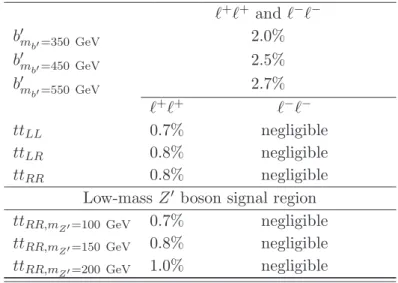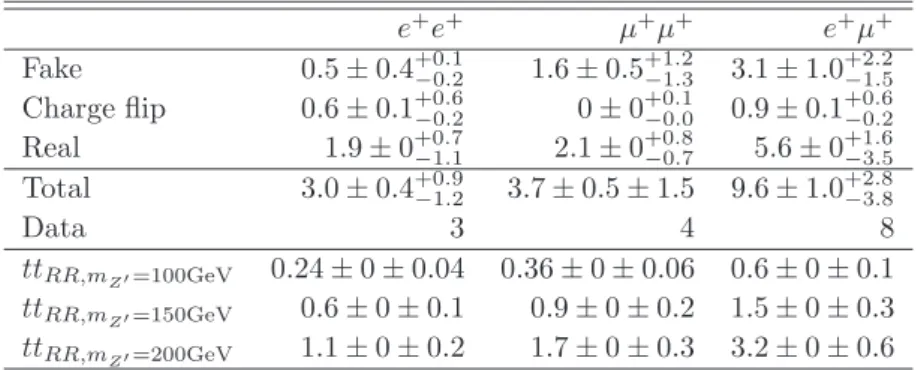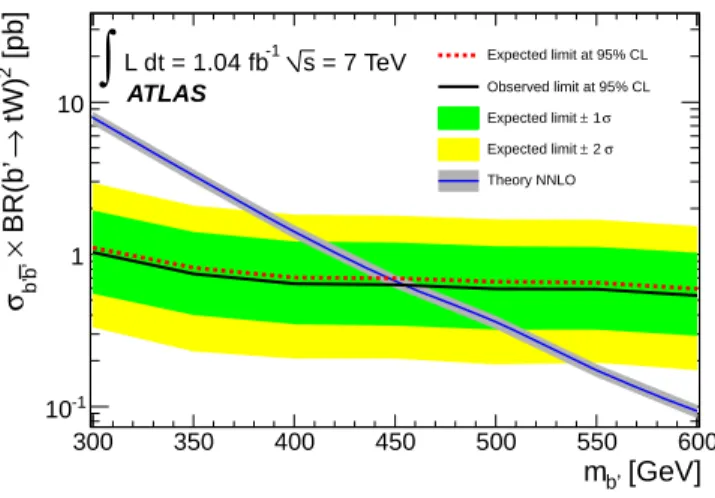Search for same-sign top-quark production and fourth-generation down-type quarks in pp collisions at sqrt(s) = 7 TeV with the ATLAS detector
Texte intégral
Figure
![Figure 1. Production of same-sign top-quark pairs via the production of a heavy vector boson (such as color-triplet Q 5 µ or color-sextet Y µ 5 [15]) in the s-channel (left) or exchange of a heavy vector boson (such as Z ′ or g ′ ) in the t-channel (right)](https://thumb-eu.123doks.com/thumbv2/123doknet/14044360.459398/3.892.181.717.125.248/figure-production-production-vector-triplet-channel-exchange-channel.webp)



Documents relatifs
59a Department of Modern Physics and State Key Laboratory of Particle Detection and Electronics, University of Science and Technology of China, Hefei, China. 59b Institute of
Thus, the coming years will therefore constitute a milestone in the direct searches for new physics and I am heavily involved in the preparation of the SUSY analysis in the
Asma HADEF Recherche de la production du boson de Higgs en association avec une paire de quarks top dans les canaux avec deux leptons de même charge à partir du detecteur ATLAS au
Predicted background and observed data in (a) the signal regions and (b) validation regions for the vector-like quark and SM four-top-quark searches, and (c) in the signal
The largest uncertainties in the signal regions are due to the size of the eμ data sample in CR-FS, used to provide the flavour-symmetric background estimate, the combined
The proposed methodology combined GIS and Landsat Thematic Mapper (TM) and Enhanced Thematic Mapper Plus (ETM+) data to assess ecosystem characteristics, including its
(2016) in mountain regions of South America. Here we modeled the climatic niche of gorse at a global scale, in its whole area of present distribution. This allows to
Using a simple eddy-viscosity model, Dow [4] used adjoint-based optimization to minimize the solution error to infer the error of the turbulent viscosity field





